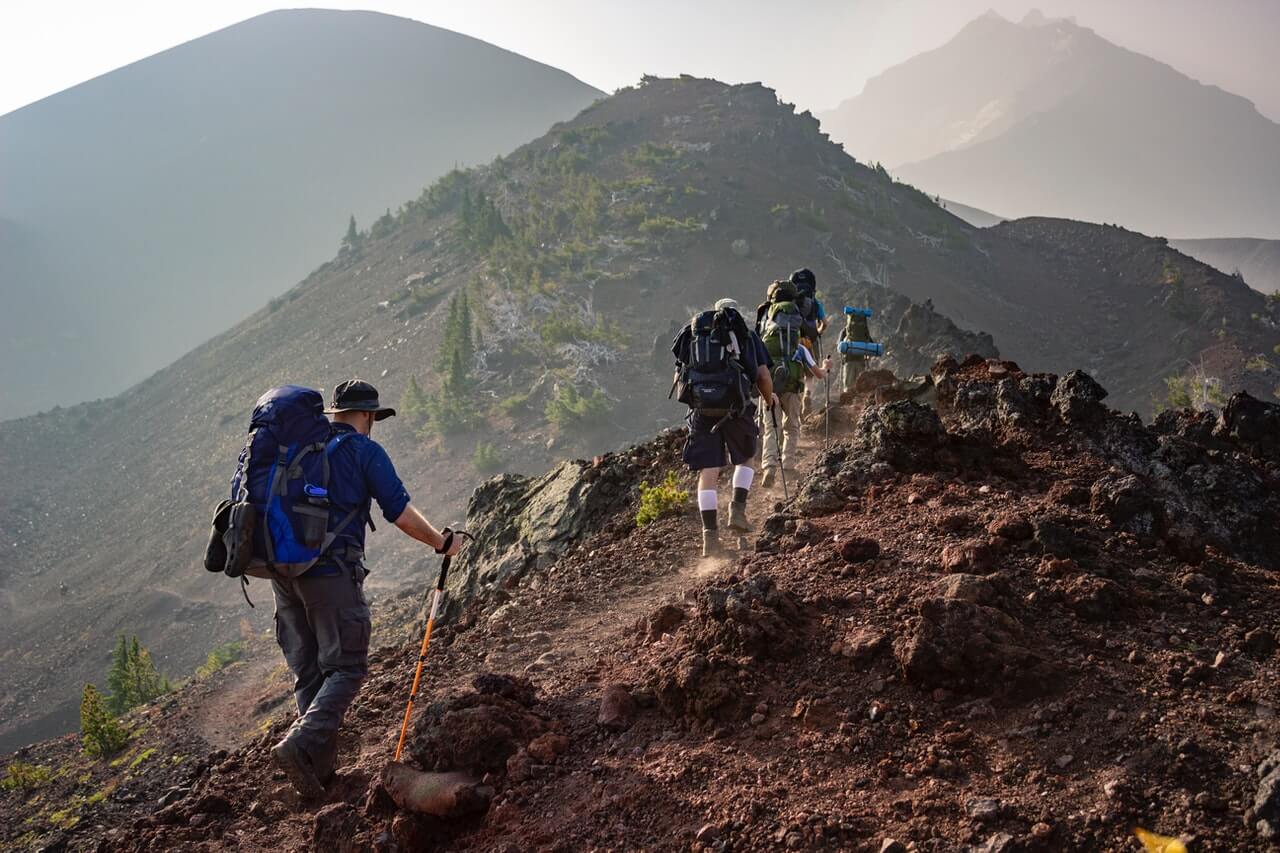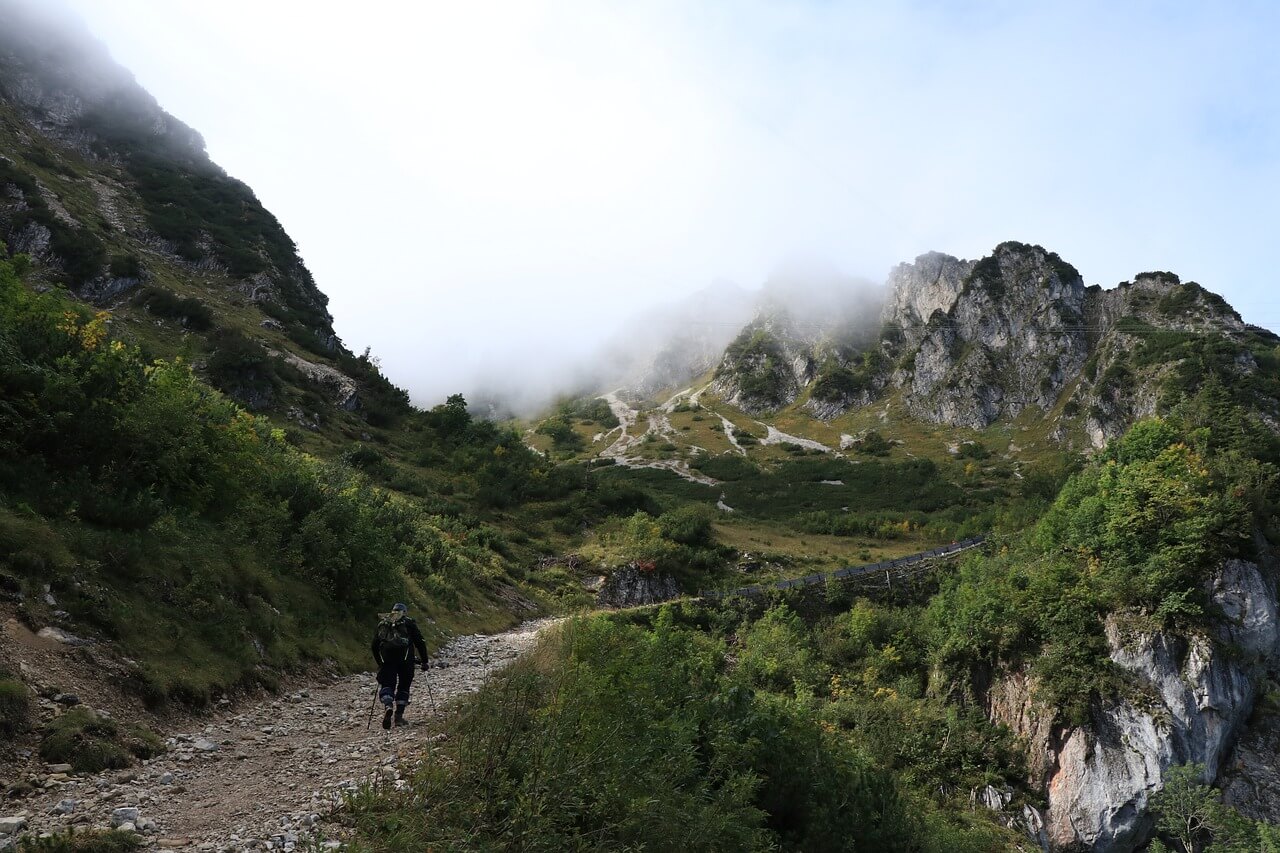Climbing, as a fashionable fitness project, can not only exercise the body, but also cultivate people's sentiment, and is sought after by more and more people. But every time climbing is always someone sighs: it's really easy to go up and down the mountain is difficult!
In the same conditions, from the human physiological characteristics, if the environment up and down the mountain is the same, are the same conditions of the stone steps, the same physical strength (or start from the bottom of the mountain, or start from the mountain), down the mountain should be easier than up the mountain ah! Why is it more difficult to go down than up?
Some people also say: when going up the mountain, people's head is on the top and feet are on the bottom, so they can see the "road" and conditions of climbing, so it is easy; while going down the mountain, or head and feet, can not see the "road" and conditions of descending, groping down the mountain, the danger increases, the difficulty also increases Therefore, it is difficult to go down the mountain. So why is it more difficult to go down the mountain?
1 Gravity and the direction of the force is different
In fact, in addition to the treacherous path, and up the mountain consumed a lot of physical strength, down the mountain and the action is very different from the usual walking. Because the gravitational center of gravity is down, and its own force is up, the two forces in the opposite direction, into a balance, in addition to some effort, less dangerous.
Downhill is different, the gravitational center of gravity is down, their own force is also down, so the balance is not good to master, not good forward force is too large, will be dangerous. And downhill speed if too fast, legs and feet will be sore and shaky.
2 Related muscles contract in different ways
The most important muscle in mountain climbing is the quadriceps, the muscle in front of the thigh. The former is called "centripetal contraction" while the latter is called "centrifugal contraction".
In simple terms, the former is a natural contraction for the tendon, but the latter is an unnatural contraction; if a person with insufficient muscle strength performs exercises like the latter, it will cause damage to the muscle cells.
If muscle cells are damaged, muscle strength will be reduced. When you go up a hill, you will have a centripetal contraction, so your muscle strength will not decrease too much. However, when descending the mountain, because of repeated centrifugal contractions, the muscle strength of people with weak feet will decrease rapidly.
If the foot strength decreases, the movement of the legs to support the weight becomes inflexible, so it is easy to fall down if you are not careful. Problems such as "the legs can't make force", "leg trembling" and "knee shaking" often occur when going downhill, which are all obvious manifestations of repeated centrifugal contractions that make the foot force decrease.

3 Downhill landing impact force is twice as high as uphill
An experiment showed that when using a pressure plate device to perform four kinds of exercises, such as walking on a flat surface, jogging on a flat surface, climbing up a 30-cm step (assuming it is an uphill climb), and walking down a 30-cm step (assuming it is a downhill climb), the impact of the ground on the feet was measured.
When walking on a flat surface, only almost the same force as the body weight rebounded slowly, but when jogging, twice the force of the body weight rebounded at the moment of landing in one stroke.
What about the situation when going up and down the stairs?
When going up the stairs, only almost the same force as the weight slowly rebound; in contrast, when going down the stairs is twice the force of going up (i.e., twice the weight), in the moment of landing in one fell swoop rebound. This experiment was conducted empty-handed, and if carrying a backpack would of course cause a greater impact.
The impact of going up and down the stairs, for example, is equivalent to walking upstairs and jogging downstairs. When climbing down, even if it seems to be walking, but in fact it is like jogging, under great pressure movement.
Try going up and down stairs when you sprain your foot, and you will be able to appreciate the difference in pain. In addition, downhill is easy to cause knee and back pain, if it is seen as a jogging-like exercise can be understood.


